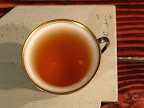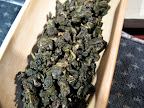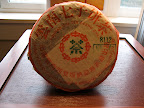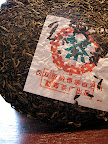


Formosa Oolong
Formosa Oolong is a specific category of oolong also commonly known as “Oriental Beauty”, “Bai Hao Oolong”, “Silver Tipped Oolong”, “Dong Fang Mei Ren”, “Pong Hong Te” and now “Gui Fei Mei Ren”.
How does the Formosa Oolong group get their wonderful flavor? An interesting article in the Taiwanese magazine gives an account:
In the months of May through July tiny insects called leaf hoppers are at their highest concentration. During this time, tea farmers throughout Taiwan make preparations for their summer harvest of Formosa Oolongs. In the past, pesticides were used to discourage these little buggers, but in recent years the farmers have hoped that their crops are well attacked. It was discovered that the more highly concentrated the leaf hoppers, the more flavorful the tea.
The leaf hoppers became a welcome pest, adding flavor to the tea throughout the island. Through several hundred if not thousands of years of evolution, the fresh tea leaf has developed a self defense mechanism. The threat caused by the leaf hopper resulted in abnormal metabolic rhythms being produced by the plant which in turn caused some sort of chemical reaction that results in “multiple tea polyphenols” (the powerful antioxidant found in oolong tea) and tea tannins. These polyphenols and tannins in turn attracted the leukoplakia wax spider, a natural predator of the leaf hopper. A full grown leaf hopper is no bigger than a fruit fly. It is as small as a spec of dust. They have a sharp beak poker mouth that resembles a shortened mosquito snout. The leaf hopper uses this poker to suck out the nutrient juices of the fresh and tender leaves of the camellia sinensis, or tea plant. The leaf hopper threatens the sprout of the fresh leaf which looks like a toothpick. In a controlled experiment, researchers found that when artificially replicating the attack of the leaf hopper in a lab, the tea plant responded similarly, producing the same abnormal metabolic rhythms. But the degree to which the chemical reaction occurred was far less. When researchers tasted both teas the results showed clearly that the tea bitten by the leaf hopper was significantly sweeter than the tea that was artificially attacked. The conclusion of the research was that the classic honey taste associated with Formosa Oolong comes from the leaf hopper actually sucking from the tea sprout.
How did Dong Ding Gui Fei “Leaf Hopper Oolong Tea” come to be? The story begins with an earthquake that occurred in September, 1999, in Nantou, Taiwan, ---7.6 on the Richter scale This earthquake is often referred to as 9-2-1. Nantou County is considered one of the safest natural environments. The island of Taiwan is riddled with earth quakes, but natural Utopias exist. Many moved to Nantou with the idea of being safe. It is an area much like Eugene, a great environment and very close to the mountains. Yet, the epicenter of the devastating earthquake of 9-2-1 was in Nantou. Needless to say, the land was greatly transformed. Many roads were destroyed. There was a period in which the tea fields were unattended to. During this lack of attention, leaf hoppers were abundant. When the reconstruction took place, special care was given to the development and nurturing of the tea farms. As a result of this lack of care followed by some special care, the Dong Ding Gui Fei of 1999 had an exceptional honey taste. Since then Gui Fei has became an immensely flavorful and highly sought after Formosa Oolong.



